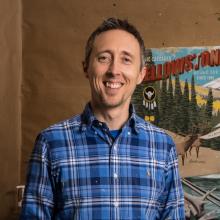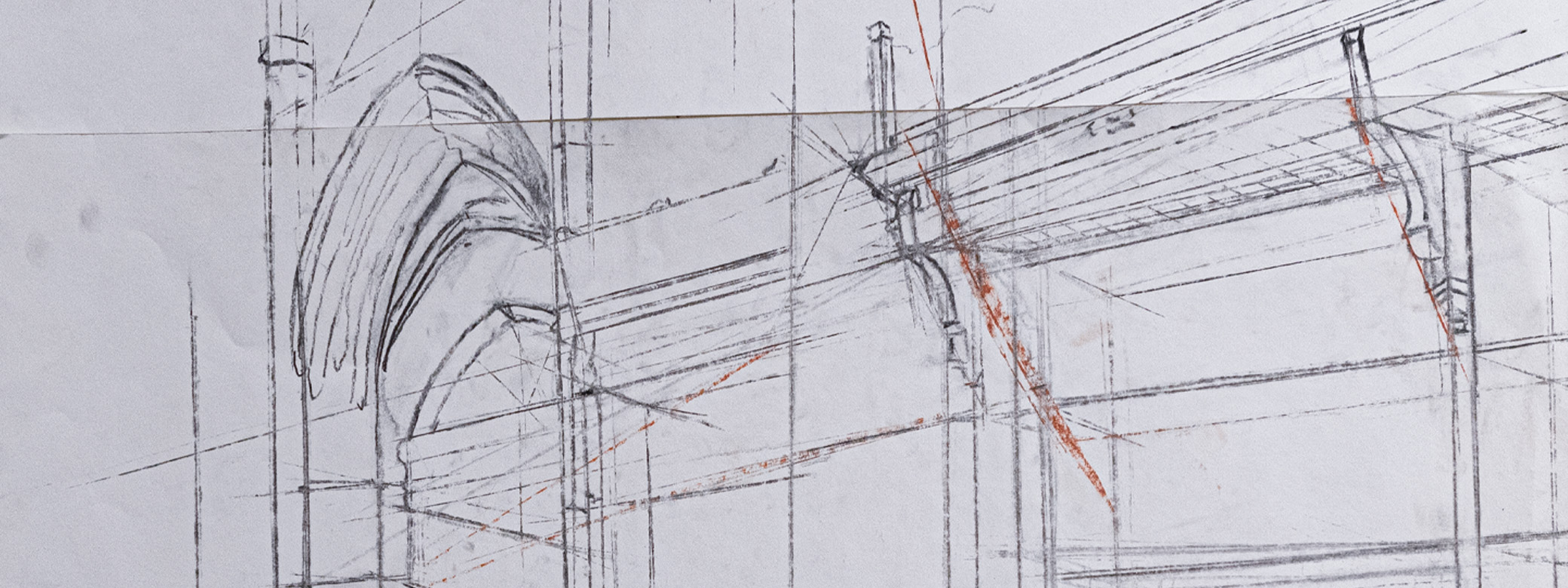
Alumni
Fields of Interest
Education
Biography
"From the beginning, I used art to tell stories. I always had a pencil in hand, drawing comics and dreaming of someday animating them. I enrolled at the Atlanta College of Art, and later California College of Arts and Crafts, intending to pursue illustration, but I quickly switched to fine art. The work I made in college was experimental; there wasn’t much consistency from one piece to another. After graduation I toured the museums of Europe and became fascinated with the large, complicated, narrative paintings of the Renaissance. I didn’t know what most of them were about, but I realized that the viewer brings their own interpretation of the meaning of a work of art. It freed me to play with ideas, to try to create compositions that allowed multiple readings. It was important to have that time outside of school to find my own voice. I did a lot of drawing and eventually began a body of work that incorporated figuration, abstraction, and landscape in service of narrative. My primary academic interests are ecology and history. Where these two intersect, we can see our society’s spiritual relationship with the natural world. I want to make ecological paintings that could not be accurately described as “landscapes.” I want to make massive, sprawling pieces that tell the epic story of North America, from the laborers who built the Empire State Building to the microbes that build the soil. They will include the voices of the people whose stories have been erased from history, as well as the buffalo massacred on the plains, the passenger pigeons whose massive flocks blocked out the sky, and the salmon still waiting at the base of dams to return to their ancestral waters. Most of my paintings have a story, though it’s sometimes only implied. I try to craft narratives that rest between the extremes of clarity and obscurity. There’s a sweet spot where a feeling comes through: the meaning can’t quite be grasped with the rational mind, but there’s a sense that it’s there. The central tension in my process exists between my activist side and my creative side. The activist wants to create a platform for social change; it wants to use art to inspire compassion for the victims of war, racism, sexism, enforced gender-roles, etc. On the other side is pure creativity, which sees making as a form of play. It wants to be free to create without an agenda, to make things for the joy of making them. The activist wants to make community-based artwork; the creative side wants to paint. I’m discovering that the activist can’t make art on its own. It can guide the development of a project, but the creative side must begin it. If creativity acts alone the art will have little meaning. I’m learning that the best projects come about from an equal collaboration between the two sides. For a long time, my creative process was focused entirely on what I wanted to say, but I have recently realized I wanted to pay more attention to how the paintings are painted. As I’ve continued to develop as an artist, I’ve focused more on texture, flatness, color, value, and mark-making. This has required me to learn a lot about the technical workings of oil paints and their mediums. My tendency is to paint tightly and detailed; the artists that inspire me the most are the ones who show me how to loosen up. Over the past few years, I’ve taught classes at the Arrowmont School of Arts and Crafts and the John C Campbell Folk School, and I have discovered how much I love teaching. I would like to be able to teach at the college level. I want to hone my craft so my work can achieve its greatest impact. "
